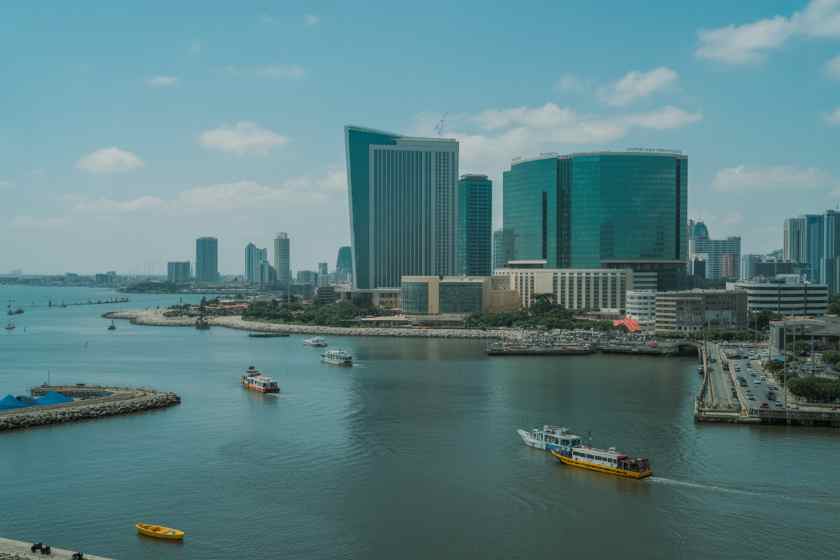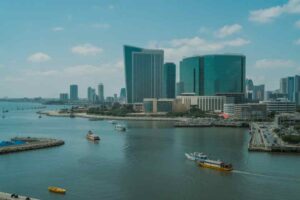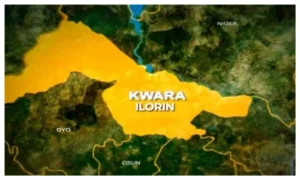Tourism in Lagos to Benefit from New Airport and Multimodal Travel Network

Lagos tourism and travel accessibility are about to change as the state speeds up the construction of the Lekki-Epe International Airport and the incorporation of aviation into a multimodal transportation system. This initiative was announced during the 2025 FAAN National Aviation Conference held in Lagos and demonstrates the city’s commitment to building the air travel infrastructure and improving mobility for travellers, locals, and business personnel.
Governor of Lagos State, Mr Babajide Sanwo-Olu, stated the importance of the modern aviation facilities in improving tourism and Nigeria’s competitiveness while providing easy access to several locations in Lagos. As demand continues to grow at Murtala Muhammed International Airport (MMIA) and congestion caused by a high volume of passengers on the routes, the building of a second major airport in the area becomes a logical solution to travel inefficiencies in the region.
Improving Travel Capacity Through Lagos’ Second Airport
Backed by investors and with construction fully approved, Lekki-Epe International Airport is a major achievement in the aviation expansion of Nigeria. It covers 3,500 hectares adjacent to the Lekki Free Trade Zone and is expected to serve over five million passengers a year.
Built to Code-F Compliance, the airport is configured to handle very large aircraft, such as the Airbus A380.
For travellers, the new airports will mean less traffic, shorter arrival and departure times, and access to one of Lagos’ most developed corridors. The new airport will be near the Lekki Deep Sea Port, coastal resorts, Dangote refinery area, and new hotels. This will provide a strategic point of entry and exit to travellers and passengers alike, whether their travel is international or intercontinental.
Lagos will be one of the few cities in the world to operate with a dual airport. This will allow atenderance to scheduling demands and flexibility for airlines. This provides tourists with more travel options and a more enhance efficient travel experience.
Ease of access, air traffic, and infrastructure directly impact the tourism sector in Lagos. Further, with the new Lekki-Epe international airport still in its construction phase and with Murtala Muhammed International Airport (MMIA) still seeing a growth in passengers, there will be an easing of air travel demand. This is likely to enhance Lagos’ attractiveness and its value as a destination, specifically for tourism, conferences, cultural tourism, and business travel.
Residential areas, luxurious hotels, and coastal leisure developments make the Lekki peninsula, with its new attractions including beaches and leisure activities, one of the most desirable still expanding tourist zones within all of Lagos. There is also a large surrounding airport, enhancing the peninsula’s potential to become a major centre of coastal and eco-tourism attraction and a base for the growing economy of the area.
Integration of Multi-Modal Transport for the Support of Tourist Mobility
As a part of the new multimodal transport system for Lagos, aimed at improved mobility for all tourists, Lagos is also developing the new aviation infrastructure. Governor Sanwo-Olu describes new transport developments to improve the connectivity of the Lagos airports, the seaports, and the master planned industrial zones and tourist destinations.
The major features of the new transport system for Lagos include the following:
New rail lines connecting major fragments of the city to the new airports and
New commercial districts.
Expanded BRT corridors to improve high-volume cargo and passenger transport for
Travellers entering and exiting the new airports.
Upgraded waterways with ferries to and from coastal communities and tourist terminals.
Improved road systems around the new travel corridors, hotels, entertainment districts, and tourist districts.
The new integrated transport system will enable smooth travel between all the new and existing major attractions of the city, the airports, Victoria Island, the Lekki Conservation Centre, the Epe mangroves, the Lagos Marina, and the National Theatre of the city.
Let me guess, you have assignments and projects looming overhead like The Sword of Damocles, don’t you? I suppose that this would explain why you really can’t be asked to dawdle around with all the little nitty-gritty details and are rather forced to rush. Thus, I can even dedicate all my astute reasoning to this one single sentence; your time is of the utmost commodity and needs to be optimized with utmost efficiency.
Enhancing Visitor Experience via Enhanced Operational Efficiency
MMIA has been the primary gateway for Nigeria for many years and has experienced high passenger loads due to business travel, tourism and increasing regional interconnectivity. The new airport eases the pressure, allowing airlines to move some of their operational workloads and decrease operational waiting times.
For tourists, this translates to:
-Less waiting times
-Quicker immigration and baggage claim
-More travel itinerary options
-Less travel fatigue
-More easily accessible regional transfers
A dual airport system opens up Lagos to handle a much larger volume of international travelers. Lagos can also support an increase in airline partnerships.
Establishing Lagos as a Global Flight Distribution Centre
Lagos is in a good position to be a major travel hub in Africa, and the city is now taking the necessary steps to become one. With the new/expanded airport(s), increasing tourism, and a multi-modal transport plan, tourism to Lagos for business, cultural festivals, international business functions, and beach tourism is likely to increase. Tourists will benefit from the new travel infrastructure.
This airport expansion also supports the long term tourism objectives Lagos has in place and will assist in positioning the city alongside other global cities that have well developed tourist infrastructures and major airports.
(Travel And Tourism World)









